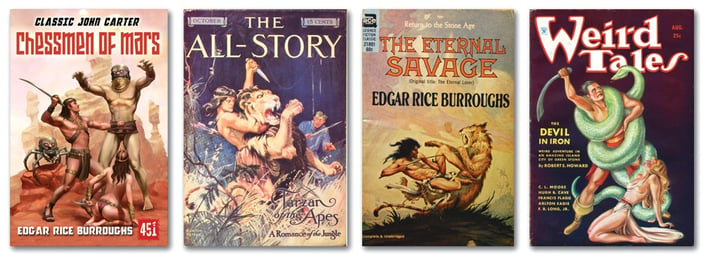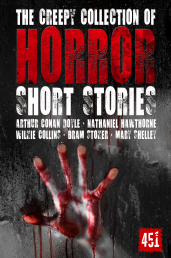Fantasy art started from very humble beginnings in pulp magazines and has become such a phenomenon in recent times that it has inspired some of the most popular TV shows, films and books – whether it's the incredible immersive world of Tolkien, the World of Warcraft franchise or the Discworld novels of Terry Pratchett that still fly off the shelves. How did fantasy become so popular? What is it about the world of fantasy art that draws people in? In this blog we will look at that journey, and what characters, writers and artists have helped the genre to develop into what it is today.
The Forefathers of Fantasy
For several hundred years after the invention of the printing press, books were a luxury item available only to the wealthy. An early bound book, however, would have held intricate woodcut illustrations and there is no denying that this was the start of something huge for fantasy. We just needed to find a way to produce it cheaply, in a way that would bring it to the everyday person and make the book a part of popular culture.

The answer was pulp magazines. They were first brought into the world by Frank Munsey in 1896 with his Argosy magazine. The pulps took their name from the cheap wood-pulp paper on which they were printed, and they were popular simply because they were so affordable to the masses. What they lacked in luxury and high quality they made up for in their potential to be printed in high volumes that could be distributed widely. Argosy was only the start of something that was to make the fantasy genre truly fantastic.
The Pulps Take Off
The pulp magazines simply continued to grow in popularity, both with readers and writers. A host of great names that we now think of as classic writers contributed to them, such as Ray Bradbury, Isaac Asimov, Fritz Leiber and Edgar Rice Burroughs. Artists contributing to the pulps were also paving the way and setting up trends that would still be popular in hundreds of years to come. For example Frank E. Schoonover's 1917 illustration for the first John Carter story showed the hero as a sword-wielding warrior with a coat of arms protecting a woman behind him, showcasing many of the key tropes of fantasy before the genre had really taken off.
One of the most popular pulps, called Weird Tales, published 'The Phoenix on the Sword' by Robert E. Howard, which was the first place that the character of Conan appeared. The Conan stories established the fantasy genre with excessive amounts of swordplay, magic, sex, violence and a brooding, strong and intelligent hero.
The artists that brought Conan to life were among the most important participants in forming the fantasy genre. Margaret Brundage used pastels to create unique works of Conan that could sometimes be intensely disturbing. Frank Frazetta's 1960s versions of the muscly, bare Conan wielding his sword above his head or wrestling with various beasts however, are probably the most well known. His iconic visuals paved the way for many artists to follow in his footsteps.
The Heroes Live On
During the second world war the success of the pulps dwindled. Their selling price had to be put up to keep up with the price of paper and so the general public was less willing to pay for them. Even after the war, when people were generally more well off, they turned to colour magazines, comics and novels for entertainment.
The fantasy heroes lived on though, and new artists came to the forefront of the fantasy scene. Conan stories began to be collected into book editions, with early cover art from Ed Emshwiller giving a new take on the character.

Our amazing Warriors and Heroes book is full of information on the origins of fantasy art, with more information on specific artists and their backgrounds. It also showcases incredible artwork from contemporary artists alongside a fascinating discussion of warriors and fantasy art. To take a closer look at this book, click here. Or to see it on Amazon, click here.




